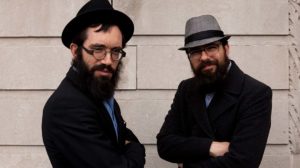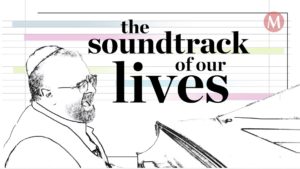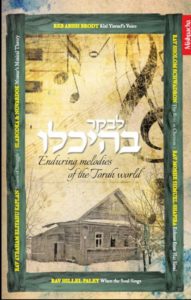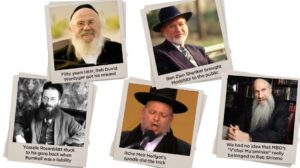Back Where I Belong
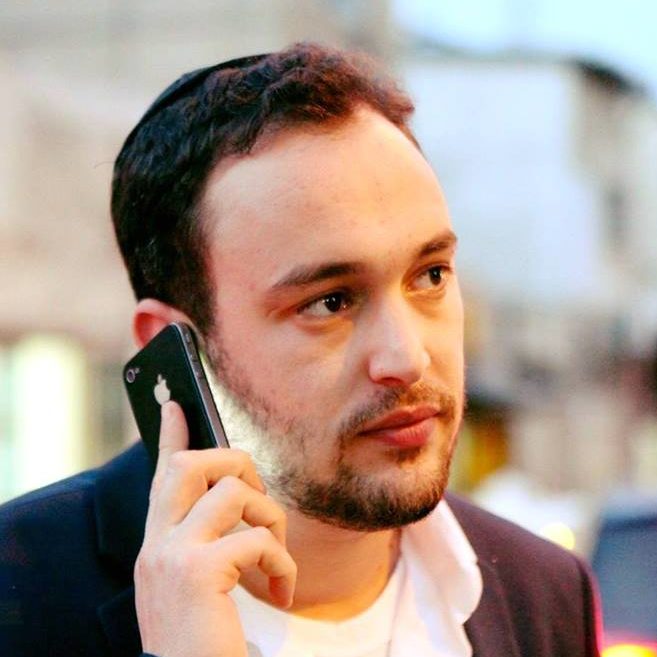
How the Belzer Rebbe pulled Dudi Kalish back from the brink
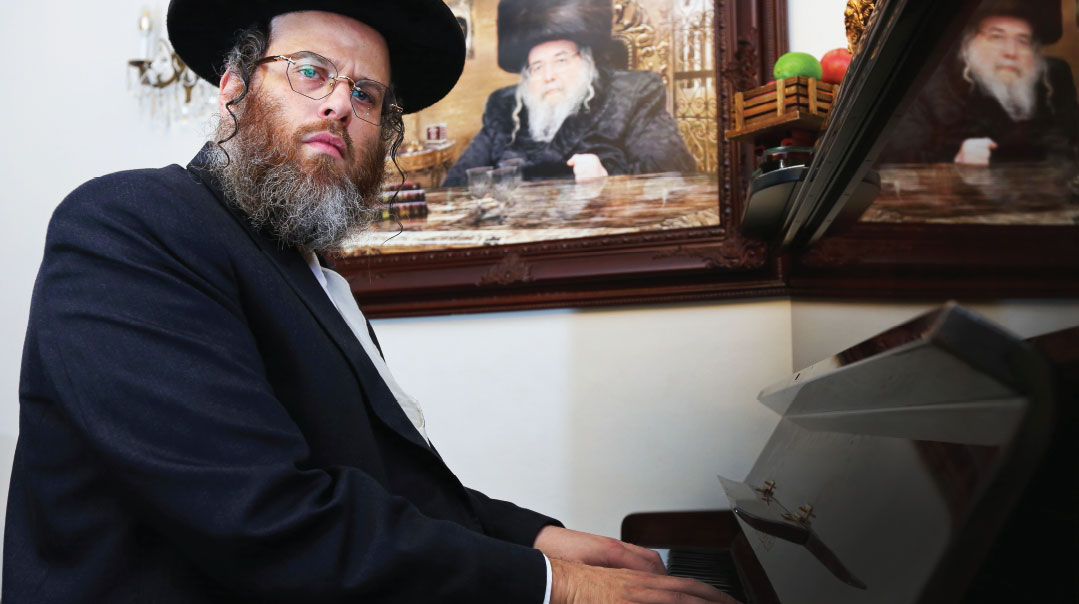
Photos: Yaakov Lederman
I figured he’d share some nostalgic musings from his childhood, talk about the albums and productions he’s proudest of, dispense some advice for budding musicians, and, as a 20-year veteran of the studio, share his perspective on today’s musical world. Instead, what I thought would be the life story of Dudi Kalish was more like a long cheshbon hanefesh, a confessional from the depths of his soul, from the pain and confusion of his spiritual lows to his return to the authentic world of Torah and chassidus.
Our conversation was punctuated by a lot of emotion, not a little pain, and even some unchecked tears. Because Dudi Kalish has been there and back. He was respected, admired, and he even still looked chassidish, as he wandered into those margins at the edge of propriety — alienated from the court of Belz in which he grew up and distanced from his own family as he began to tread into the world of secular American entertainment.
When he first returned to the Belz beis medrash, under the strong, loving influence of the Belzer Rebbe himself — the leader who never gave up on him — many eyebrows were raised. But he survived the stares and the whispers, and learned some powerful and humbling lessons about the blessings and pitfalls of talent.
The Dream
The Kalish living room in Bnei Brak is unquestionably a chassidish home: There’s an ornate bookcase packed with seforim, brocade curtains that extend over an entire wall, and a gigantic portrait of the Belzer Rebbe. The piano nearby, though, indicates that something else is happening here as well.
Dudi Kalish, 41, was born in Bnei Brak, where his father still lives. Today their connection is stronger than ever, and not only because of the physical proximity of their apartments. Reb Avraham Yaakov Kalish, 90, a Holocaust survivor who raised a large family in Eretz Yisrael, gets a daily visit from his son, who has also become his regular chavrusa since his return to Belz.
Reb Avraham Yaakov and his brother, born in Transylvania to a long-established Belzer family, were the only surviving members of their family. After the war, he became one of the central figures involved in the revival of the Belzer court.
Dudi, the youngest of ten brothers and sisters, says the Holocaust always hovered over the family consciousness. “We lived it every day,” says Kalish. “My father didn’t speak about it too much, but the little he said only intensified our horror of what he’d endured. I’m a classic ‘second-generation’ survivor.”
Dudi Kalish wasn’t one of those wunderkind child prodigies. He had a straight Belzer education, from the Talmud Torah in Bnei Brak to yeshivah ketanah and yeshivah gedolah in Jerusalem. Still, he was always connected to music — his brother is composer Reb Shlomo Kalish — and couldn’t hide his talent.
“I was 17 when the story really began,” he remembers. “That’s when I was approached by Rav Yosef Tzvi Breyer, rosh yeshivah of the Belzer yeshivah in Beit Chilkiyah, who was pretty much in charge of the Belz music industry. He was recording an album of his compositions and asked me to organize a choir to perform them.”
Rabbi Breyer, the venerated composer of the Belzer court, has hundreds of songs to his credit, some of which have become classics — and not only in Belz. One of his most famous is the Birkas Hamazon niggun, born thanks to a mandate from the Belzer Rebbe himself to create a new bentshing tune that would capture children’s hearts.
“When Rav Breyer turned to me, I realized that I was being granted the opportunity to fulfill a dream — the professional music world was always my ambition, but it was really more like a fantasy,” Dudi says. “I didn’t believe it would really happen. I was thrilled to be able to organize the choirs for his album. My salary was a serving of cholent and schnitzel from the Shtisel restaurant, which Rav Breyer would bring to me in yeshivah. It sounds pretty silly now, but back then, it was a great deal.”
As he began rehearsing with the choirs, it became clear that Kalish himself was gifted with extraordinary talent. “Back then, to be successful, you really had to understand music — things were a lot more unforgiving in the studio. There was no such thing as computer-generated music or the sophisticated mixing that goes into an album today. You had to get it right, because they couldn’t just click and cut and paste to adjust any mistakes. I had actually learned sheet music from an old Jew, a Holocaust survivor who lived near the Belzer yeshivah on Agripas Street. He had a huge store of classical music that fascinated me. I would sit in his house for hours going over those musical scores. I taught myself to read sheet music and then began writing my own compositions.”
Growing the Industry
Kalish’s first chance to use that self-taught knowledge came in 1997, when he was asked to arrange the music for an upcoming Belz album of Rav Yosef Tzvi Breyer called Vesimloch Aleinu. He’d written a score for a string quartet — viola, cello, and two violins — and remembers how mortified he felt when the musicians began to play and the music sounded discordant. “I thought what I had written wasn’t good. But then they played it again and I realized that the glitch was theirs, that the score was good after all. I’m not going to say it didn’t have an effect on me — I realized I had real talent.”
Kalish says that while growing up, the soundtrack in his house was a combination of classical Jewish music and the emerging cassettes of Belz. “My favorite was the Belz album that came out in 1985, produced by Reb Mona Rosenblum and Reb Yirmiya Damen, in honor of laying the cornerstone of the big beis medrash in Jerusalem. It was an authentic chassidic album that featured an array of real instruments, and I couldn’t stop listening.”
After his marriage, Kalish’s star began its rapid ascent. From 1998 to 2005, he arranged and produced 15 albums, including Yosef Moshe Kahane’s L’Chaim projects, albums for Pittsburg, Vizhnitz, and Kozhnitz niggunim, and a capella albums including Vocalish and Ranenu Tzadikim.
“I believe I brought a breath of fresh air to chassidic music,” he says. “It was a period of enormous growth in the chassidic music industry, and I’m grateful to have had an opportunity to be a part of that.”
Today, Kalish is known as a singer as well as composer and arranger, but early on, he hardly ever sang. “Until one day, when I met Mordechai Ben David and he asked me why I never sing,” he recounts. “I answered, ‘Who me, a singer?’ But he insisted that I sing. So I tried it out. At first I ‘disguised’ it by singing with the backup choirs on my albums. Then I found the courage to go solo.”
Soon listeners could easily recognize Dudi Kalish’s voice: the sincere and powerful sound of a baal tefillah who knows music intimately and knows how to engage his tzibbur. That voice was to transform him into one of the most sought-after vocalists in the chassidic music world.
Disconnect
With so many opportunities and invitations to sing and record, Dudi felt an insatiable urge to learn more, to know more, to find the best new techniques and tricks to enhance his music. New York seemed the logical next stop. “I’d leave Bnei Brak for periods of time and travel to New York, stay there for a while to study different techniques,” he recalls. “I met some of the best musicians and teachers in the industry. The trouble was, my priorities started getting mixed up. Soon it wasn’t just about improving in the profession. I was getting sucked into a whole culture.”
Dudi doesn’t blame the musical education itself for his spiritual deterioration. “I’d studied in Israel, too, at a well-known conservatory in Jerusalem. Out of ten students in our course, only two held out until the end — me and another student. That course really gave me the professional knowledge I needed, without shaking my commitment to my values. Now, though, something else was happening. I lost my balance. The new world of music that I found overseas enchanted me, sucked me in, and I began to believe that only there, in the wider world, could I fully maximize my musical talent and attain real skills. But I never fathomed what a heavy price I’d pay. I had no idea how far away I’d be swept.”
Kalish took what was considered a drastic step for his until-then insular chassidic audience: In 2007 he joined a chassidic “rapper” to create an album of Yiddish-language songs based on the well-known, less-than-savory works of several famous non-Jewish entertainers. The album was essentially banned in the chareidi world.
To be sure, Dudi Kalish wasn’t the first chareidi entertainer to “borrow” secular songs. But the whole approach was flawed, he explains. “It was a gimmick intended to create noise, and that provocation — that’s how I define it today, a deliberate provocation — was a huge mistake. The biggest mistake of my life. Over the years many apparently worse things were released in the name of chassidic music, but that album was in many ways a precedent.
“And maybe because of where I was coming from, the album became a symbol for unwholesome innovation in chassidic music. Today I’d agree that the criticism it received was completely justified. At the time I was furious, but now I not only get it, I totally identify. You see, there’s good music and bad music. This wasn’t bad music. But the album’s feel, the way it was presented, was very provocative, and in retrospect I deeply regret it. I’d gone too far afield.”
As he relives those days, Kalish makes a sobering reflection. “I don’t think I would have created an album like that on my own,” he says. “I was in bad company. If you’re in the society of bad people, it affects you. I allowed myself to be dragged into bad places, and as a result I — and my family — paid a heavy price.”
On a certain level, he says, what hurt most wasn’t the criticism hurled at him, but knowing that he’d brought a style of music into the world that wasn’t really him — it wasn’t a real expression of his soul, but of the klipah, the shell, of things unholy.
“I was really torn in two, but it took me a while to grasp this,” he says. “There are Jews who’ve had great success in the secular music world, but when you take that path there’s always a part of your essence that gets sacrificed. I thank Hashem every day that I’m no longer there — it’s not a life that’s appropriate for anyone with real values, family values, values of Yiddishkeit, values of Torah.
“When someone like me comes to New York, there are plenty of musicians who are specifically looking for the bochur with the peyos and big kippah to sing with them. There was a point at which I was sitting in Los Angeles with producers from some big-label companies, and could have easily given into the temptation.”
Still, Kalish had a foot in both worlds, and the rap fiasco notwithstanding, he was soon coming out with more genuine chassidish albums: Vekonei Hakol, Ehrliche Niggunim (songs of Yom Tov Ehrlich), Nigunei Breslov, Parenches (which included his hit “Hishbati,” written by venerated mechanech Rav Pinchas Breyer), Ezkera, and the joint venture with Shloime Gertner, David U’Shlomo.
And then came an event that would force Kalish to look at himself and see where he was, and where he really wanted to be. It was on the eve of Yom Hazikaron, 2013. Kalish was invited to appear before a massive, mixed audience, at the outdoor theater at the Sultan’s Pool outside Jerusalem’s Old City, to perform one of Shlomo Carlebach’s most poignant melodies, “Shifchi Kamayim.” He was onstage alone, wearing a chassidishe rekel (his peyos and beard a little shorter, but still there), and really, what was so bad?
“It was a very emotional event, and many Jews were greatly inspired by it,” he says. “But the audience was mixed, there were hundreds of girls swaying as I was singing, and the performance was streamed live by the different media networks. I saw the video and it left me shaken. That was the breaking point for me. I understood that I had crossed a boundary and that I was somewhere an authentic chassid Jew shouldn’t be. If there’s one moment I can point to when I finally grasped that my life was slipping away between my fingers, it was that moment. Because the entire country was watching. On the one hand, I was able to touch the hearts of lots of Jews and that’s a fine and important thing. But on the other hand, I realized I was destroying my life, my identity, my personality. I realized the time had come to return home.”
Embraced Again
Becoming reinstated in the chareidi music world wasn’t simple, though. The chassidus in which he grew up found it difficult to accept him back into the fold. He hadn’t been in Belz for years, and his name had become a symbol for those who abandoned the chassidus.
But someone was waiting for him. One person in the great chassidic court never stopped believing that the day would come when Dudi Kalish would leave the alien world into which he’d cast himself and return home, back to the heart of Belz. It wasn’t one of the chassidim, nor some prominent soul-saving mashpia. It was the Belzer Rebbe himself.
Kalish doesn’t reveal all the details, but one thing he shares: The Belzer Rebbe refused to allow Kalish to sink into the abyss. And when Kalish was ready, the Rebbe was there to receive him, to bring him back to the community in which he’d grown up, back to the niggun that’s Belz.
“The Ruv saved me,” Kalish says. “Not just me, but also my family, my children, and my future. Rav Asher Freund ztz”l used to say that a real tzaddik is always there when a Jew genuinely needs his help. And that’s how I felt when the Rebbe came to schlep me back to my roots. When the tzaddik comes to pull you back, there’s nothing that can get in the way.”
When Kalish returned to Belz for the first time, he was followed by hundreds of curious eyes. His beard was trimmed, his appearance a little more “modern.” But one fatherly pair of eyes gave him the confidence to join the Rebbe’s tish as a regular chassid and undertake the journey of teshuvah out of love.
It was a slow, painful process, but the Rebbe didn’t give up on him. As a massive gathering of the chassidus in the Jerusalem Arena in 2016, he was invited up on the dais with the Rebbe himself. Once again, Dudi Kalish was singing for Belz.
“I was standing on the edge of a cliff leading into an abyss,” he says. “And the Ruv was there to pull me back.” Kalish is silent a moment, as his eyes look like they’re trying to hold back tears. There are various papers and documents on the table where we’re sitting, and one of them is a test that his young son had brought home from cheder. Kalish smiles, picks it up, and says quietly, “You understand? This test is worth more than any applause. When I see my son going on the right path, the path of Torah and chassidus, is there any greater joy?”
Kalish has returned to his chassidic lifestyle full-force, a commitment reflected in his last three albums: Kalish Mit Yedidim, Libi, and his newest solo ablum, Zog Shoin Ven. He’s also become somewhat of a mentor to new artists, giving them musical advice along with a penetrating message.
“The temptation to wander off will always exist,” he says. “And the greater the talent, the greater the temptation, because the klipah is more eager to lure you away. The Ruv taught me, however, that having talent doesn’t have to contradict your sincerity as a Jew. Talent doesn’t have to pollute you. You can nurture it, and you can still remain pure.”
He learned something else too: how to rebuild his relationship with his father. “When I started turning around and heading back home, I established a daily hour-long learning seder with my father. At first I went to him in a shirt without a rekel, but then I realized that I should show some respect and come to him like a chassidishe Yid.
“Since then we learn together every day for an hour. Can you imagine what a pleasure it is to learn with a talmid chacham such as him? I’ve merited to finish several masechtos with him, and when I told the Rebbe that I had finished a masechta with my father, the look I saw in his ees was the most heartwarming thing I’ve ever seen.”
Kalish has had his years in the limelight, and says that today he’d rather give the stage to younger artists. “I prefer not to be the solo, the star, but to work behind the scenes with the choir, while other people take center stage. I’ve also started selling my compositions to other singers. Once it would never have occurred to me to hand over the mic. But I think my experience in the music world has brought me to a place where I no longer feel the need to be the person who gets the most attention, who everyone looks at starry-eyed.”
He’s also set up boundaries for himself when he is center stage. “Of course I made a resolution not to appear before mixed audiences, no matter what. But beyond that, a chassidic artist needs to establish extra boundaries. For example, I never go on stage without the full chassidic levush. I think now people understand better why that’s so important.
“Because in the end it’s these little restrictions that can save you. You have to keep watching yourself, making sure you’re not veering off the path, but the boundaries you set can help prevent you from wandering off into areas where you shouldn’t be. So you’ll spare yourself at least some of the challenges that an artist has to face.”
Knowing what he knows now, would Dudi Kalish have done it differently? “Now I know that Hashem planned my destiny in such a way that I would have to go through those obstacles, to learn from them, and grow from them. Now I understand that I had to go through that to realize where I really belong. And sometimes Hashem gives you challenges that are really difficult to handle, but for me, at least, there’s only one way to ensure that you’ll be able to ove rcome any difficulty in the world: the connection to a tzaddik. My rebbe understood how to bring me back to Hashem, and I try to pass this message along to anyone who will listen: A Jew will always have nisyonos. Sometimes he’ll overcome them, sometimes he’ll succumb. But if he’s connected to a tzaddik, then he has a lifeline, someone who can pull him out of the mud and restore him to the Torah, to Yiddishkeit, to love of Hashem — back to the pure place his soul has been yearning for all along.”
(Originally featured in Mishpacha, Issue 787)
Oops! We could not locate your form.

